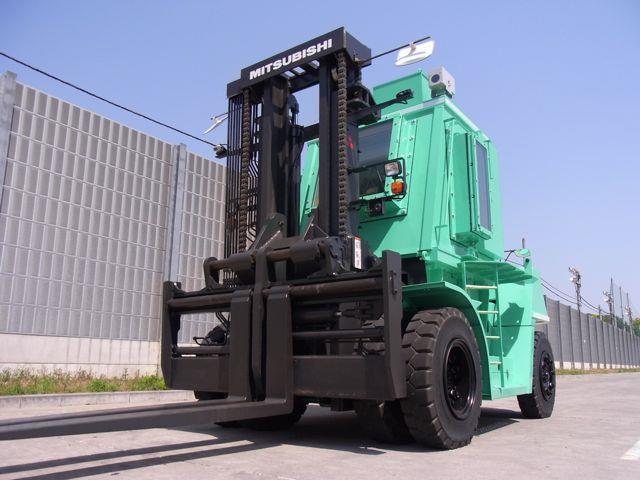 The forklift has a fully sealed cabin constructed with thick steel plates and thick lead glass, with all sides welded to enable the operator to manoeuvre the forklift with maximum protection from radiation. |
Mitsubishi Heavy Industries Ltd (MHI) has developed a special heavy-duty forklift to handle contaminated rubble near the Fukushima Daiichi nuclear power station operated by Tokyo Electric Power Company (TEPCO).
Two of the forklifts are being delivered to a joint venture of Taisei Corporation, Kajima Corporation and Shimizu Corporation that is handling contaminated rubble at the site.
The order's value is confidential.
The joint venture wanted a forklift to complement work being conducted by unmanned radio-controlled heavy equipment. The first forklift was delivered on Tuesday; the second is slated for delivery on 20 May. MHI says the forklifts were developed and manufactured in one month.
MHI has incorporated its experience in vehicle systems, filtering, heavy plate welding, and radiation shielding and management into the new forklift, which is based on the company's 15-ton heavy-duty forklift.
The forklift has a fully sealed cabin constructed with 100mm (3.9 inch) thick steel plates and 230mm (9.1 inch) thick lead glass, with all sides welded to enable the operator to manoeuvre the forklift with maximum protection from radiation.
Before delivering the forklifts, MHI tests the radiation shield's capability using its radiation testing facility. The heavy-duty forklifts are equipped with special filters to remove dust and other radiation-contaminated material to enable a stable supply of purified air. The air-conditioned cabin is pressurised by an air purifier to prevent outside air from entering it.
Each forklift is 7.3 metres (24 feet) long, 2.5 metres (8.2 feet) wide and 3.9 metres (12.8 feet) high. It weighs 30 tons and has a load capacity of nine tons. The forklifts are supplied with attachments, including hinged forks, buckets, box clamps and pivoting forks.
The attachments help the forklifts efficiently transfer rubble into low-level radioactive waste transfer containers.
After the earthquake, MHI dispatched engineers to help restore operations at damaged thermal power plants. It also sent emergency supplies to affected areas using the company's helicopters and other aircraft.